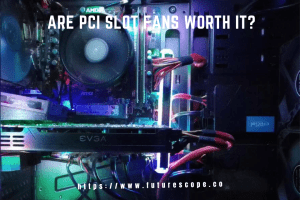What We Have Covered in This Article
Last Updated on June 19, 2021 by Editor Futurescope
It is no debate that malfunction and errors on just anything can drive anyone up the wall.
The Nest thermostat E73 error, which comes up as a result of your thermostat not electrically detecting your Rc wire, is not an exception.
Therefore, to fix the E73 error on your Nest thermostat, do a thorough examination on aspects like HVAC wiring, air filter, and drain tubes and make sure they’re working right.
Before we indulge in: how to fix Nest thermostat E73 error, let us first get to know what an Rc wire is.
What is an RC Wire
Rc stands for Red cooling. The red cooling wire, located at the back of your thermostat, is responsible for the round-the-clock volt AC power from your transformer.
The Rc wire is a live electrical wire that connects to the RC terminal, which controls the cooling system.
Therefore, your Nest thermostat will automatically fail whenever the red cooling wires fail to convey power to it.
The inability of the red cooling wires to convey power to the thermostat happens when the AC outdoor unit shuts down. This shutdown could be due to several reasons, including:
- Blocked filters.
- Overheating of the compressor.
- Issues with the outdoor fan motor.
- Low gas.
- Underlying issues with the compressor.
How to Fix Nest Thermostat E73 Error
Here are a few quick fixes for the common E73 error on the Nest thermostat.
Check HVAC Fuse
During summer and hot days, your AC does double the work to remove heat and control humidity.
In turn, the fuse of your AC may break down, causing the E73 error.
Thus, the HVAC system will fail to convey power to your Nest thermostat.
Observe the following steps when checking the HVAC wiring.
- The first step is to switch off your system’s breaker(s) to discontinue power flow to the HVAC system.
- Double-check that you have powered off your system.
- Locate the HVAC fuse on the control board of the HVAC system. If you are having difficulty locating it, feel free to use the owner’s manual.
- Carry out an examination on the HVAC fuse. A discolored fuse indicates damage.
- If your fuse is damaged, get another one and replace it accordingly, then check for the presence of the E73 error.
Examine the Air Filter
For your Nest thermostat to function as anticipated, it should have optimum airflow.
A clogged air filter is a brewing pot of trouble as it may not only limit airflow but also cause your AC’s fuse to burn out.
Your system’s air filter’s location could be on your house’s wall, ceiling, or somewhere near your fan.
If you have trouble locating your filter, contact a professional to help you locate it.
After locating your air filter, check to see if it’s clogged up or dirty. If it is, get a replacement.
In other cases, you’ll find that your system is experiencing the E73 error because the cooling coils are frozen. In such cases, you’ll need to thaw the cooling coils before the problem goes away.
Examine Rc and Overall Wiring
Among the first contemplations to make when looking for a solution on how to fix Nest thermostat E73 error is, carrying out an overall wiring check.
Here are steps on how to go about it:
- The first step is usually to shut down the HVAC system by flipping off your system’s breaker(s).
- Switch your system to operate in heat mode by disconnecting only the Rc wire and detaching the thermostat display from the base.
- Draw out the Rc wire and check to see that it is straight, has no less than one centimeter of copper exposed, and is not corroded.
- Check the voltage consistency of the Rc wire using a voltmeter. A consistent power supply to your Nest thermostat will have the voltmeter reading 24vac.
- Insert the Rc wire back to your Nest connector and keep the connector button pushed down.
Additionally, to eliminate any wiring problem, check all the other wires for corrosion before turning everything back on then checking to see if the E73 error resolves.
Examine the Drain Tubes
A drain tube is where condensed moisture that forms when the AC is cooling air flows into.
A clogged drain tube will cause your AC system to stop operating as a measure to prevent the condensed moisture from overflowing.
A clogged drain tube will eventually cause the E73 error.
Here are steps to follow when examining your systems drain tubes:
- Turn off your system’s breaker(s) in a bid to shut down the HVAC system. To ascertain that your system has shut down completely, check to see if the fan lights are off.
- Locate the system’s drip pan, usually found underneath the cooling coils. Therefore, the first step prior to locating the drip pan is to locate the cooling coils.
- Make sure there is no water and that the drain tube connected to the drain pan is not clogged.
FAQ
What Does E73 Mean on Nest?
E73 is an error code that shows up whenever your nest thermostat fails to electrically detect the red cooling wire, otherwise known as the Rc wire.
You can fix this E73 error by examining some aspects of your Nest thermostat system, including the HVAC fuse, filters, Rc and overall wiring, and drain tubes.
How Do I Fix Nest Thermostat E73 Error
Some quick fixes for common culprits of the E73 error on your Nest thermostat include:
- Checking to see that your system’s HVAC fuse is working correctly and not burnt out.
Additionally, ensure that the wiring connection to your HVAC fuse is steady.
- Examining to check that your system’s air filters are not clogged or dirty.
- Carrying out a careful but thorough examination of the Rc wire and other wirings on your Nest thermostat.
- Examining to check that the drain tube is not clogged.
- Checking to see if the AC breaker is tripped. If it’s tripped, turn it off then on.
Conclusion
All man-made things are bound to incur errors at some point, and the Nest thermostat is one of such man-made things.
However, all problems have solutions. Thus use the above tips on how to fix Nest thermostat E73 error to tackle E73 error.









